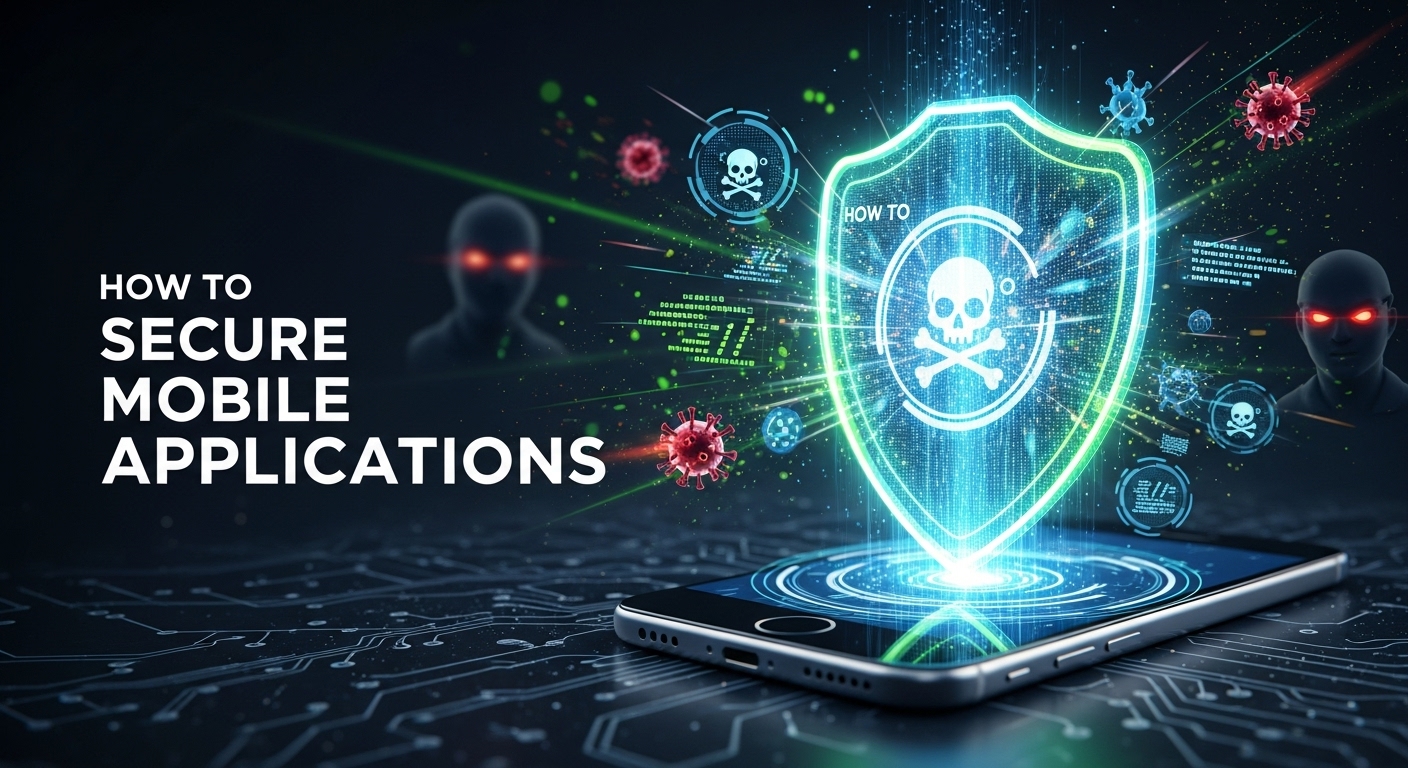Mobile application security has become a critical concern as businesses increasingly rely on mobile apps to serve customers and manage operations. With over 6.8 billion smartphone users worldwide and mobile apps generating billions in revenue, the stakes for securing these applications have never been higher. Unfortunately, many organizations struggle to implement comprehensive security measures, leaving their mobile applications vulnerable to sophisticated cyber attacks.
Understanding how to secure mobile applications effectively requires a multifaceted approach that addresses both technical vulnerabilities and human factors. The mobile threat landscape continues to evolve, with attackers developing increasingly sophisticated methods to exploit weaknesses in mobile application security frameworks.
Understanding Mobile Application Security Threats
Before diving into security solutions, it’s essential to recognize the primary threats facing mobile applications today. These threats can be categorized into several key areas that directly impact mobile application security.
Common Vulnerabilities in Mobile Apps
Data leakage represents one of the most significant risks to mobile application security. Applications often store sensitive information in insecure locations, making it accessible to malicious actors or other applications on the device. This includes personal user data, authentication tokens, and business-critical information that could compromise both individual users and entire organizations.
Insecure authentication mechanisms pose another major threat. Many mobile applications implement weak password policies, fail to properly validate user credentials, or store authentication information in plain text. These weaknesses in mobile application security can lead to unauthorized access and data breaches.
Code injection attacks, including SQL injection and cross-site scripting, remain prevalent in mobile applications. These vulnerabilities allow attackers to execute malicious code within the application context, potentially gaining access to sensitive data or system functions.
1. Implement Robust Authentication and Authorization
Strong authentication forms the foundation of effective mobile application security. Multi-factor authentication (MFA) should be implemented wherever possible, combining something the user knows (password), something they have (mobile device), and potentially something they are (biometric data).
Consider implementing OAuth 2.0 or similar industry-standard authentication protocols. These frameworks provide secure, standardized methods for handling user authentication while reducing the burden on developers to create custom authentication systems from scratch.
Session management requires particular attention in mobile application security. Implement secure session tokens with appropriate expiration times, and ensure that sessions are properly invalidated when users log out or when suspicious activity is detected.
Biometric Authentication Integration
Modern mobile devices offer sophisticated biometric authentication options, including fingerprint scanning, facial recognition, and voice authentication. Integrating these features enhances mobile application security while improving user experience by reducing friction in the authentication process.
When implementing biometric authentication, ensure that biometric data is stored securely on the device using hardware security modules when available. Never transmit raw biometric data over networks or store it on remote servers.
2. Secure Data Storage and Transmission
Data protection encompasses both data at rest and data in transit, making it a cornerstone of comprehensive mobile application security strategies.
For data storage, implement strong encryption using industry-standard algorithms such as AES-256. Avoid storing sensitive information in easily accessible locations like shared preferences or external storage without proper encryption. Consider using Android’s EncryptedSharedPreferences or iOS Keychain services for storing sensitive data securely.
Encryption Best Practices
Transport Layer Security (TLS) 1.2 or higher should be used for all network communications. Implement certificate pinning to prevent man-in-the-middle attacks, and ensure that your application validates SSL certificates properly. The OWASP Mobile Security Project provides comprehensive guidelines for implementing these security measures effectively.
Database encryption deserves special attention in mobile application security planning. If your application uses local databases, encrypt the entire database file and implement proper key management to protect against unauthorized access.
3. Conduct Regular Security Testing and Code Reviews
Proactive security testing identifies vulnerabilities before they can be exploited by malicious actors. This includes both automated testing tools and manual security assessments conducted by security professionals.
Static Application Security Testing (SAST) tools analyze source code for potential security vulnerabilities without executing the application. These tools can identify common coding errors that lead to security weaknesses, such as hard-coded credentials or improper input validation.
Dynamic Application Security Testing (DAST) evaluates running applications for security vulnerabilities. This approach can identify runtime issues that static analysis might miss, including authentication bypasses and injection vulnerabilities.
Penetration Testing for Mobile Apps
Regular penetration testing by qualified security professionals provides valuable insights into real-world attack scenarios. Professional testers can identify complex vulnerabilities that automated tools might miss and provide actionable recommendations for improving mobile application security.
The NIST Cybersecurity Framework offers structured guidance for organizing security testing activities and integrating them into development workflows.
4. Implement Secure Coding Practices
Secure coding practices must be embedded throughout the development lifecycle to ensure robust mobile application security. Input validation represents a fundamental security control that prevents many common attack vectors.
Validate all user inputs on both client and server sides, implementing whitelist-based validation wherever possible. Never trust data received from mobile clients, as applications can be modified or reverse-engineered by attackers.
Error Handling and Logging
Proper error handling prevents information disclosure while maintaining application functionality. Avoid exposing sensitive system information through error messages, and implement comprehensive logging for security monitoring purposes.
Secure logging practices include avoiding the storage of sensitive information in log files and implementing proper log retention policies. Consider using centralized logging solutions that provide better security and analysis capabilities.
5. Secure the Application Development Lifecycle
Security must be integrated throughout the entire development process rather than being treated as an afterthought. This approach, known as DevSecOps, ensures that security considerations are addressed at every stage of mobile application development.
Implement security reviews at key development milestones, including design reviews, code reviews, and pre-release security assessments. This systematic approach helps identify and address security issues early in the development process when they are less costly to remediate.
Third-Party Library Management
Mobile applications typically rely on numerous third-party libraries and frameworks, each of which can introduce security vulnerabilities. Maintain an inventory of all third-party components and regularly update them to address known security vulnerabilities.
The OWASP Dependency-Check tool can help identify known vulnerabilities in third-party components and should be integrated into your development pipeline.
6. Network Security and API Protection
Mobile applications frequently communicate with backend services through APIs, making API security a critical component of overall mobile application security. Implement proper API authentication using tokens or API keys, and ensure that APIs validate all requests thoroughly.
Rate limiting protects against denial-of-service attacks and abuse by limiting the number of requests from individual clients. Implement both per-user and global rate limits to maintain service availability while preventing abuse.
Certificate Pinning Implementation
Certificate pinning provides an additional layer of protection against man-in-the-middle attacks by validating that the server certificate matches expected values. This technique significantly enhances the security of network communications in mobile applications.
Consider implementing backup certificate pins to handle certificate rotations gracefully while maintaining security. The OWASP Certificate Pinning Guide provides detailed implementation guidance for various platforms.
7. User Education and Awareness
Technology alone cannot provide complete mobile application security. Users must understand security best practices and their role in maintaining application security. Implement user education programs that cover topics such as strong password creation, recognizing phishing attempts, and safe mobile device usage.
In-app security guidance can help users make informed decisions about security settings and features. Consider implementing security dashboards that allow users to monitor their account security status and take appropriate actions when needed.
Monitoring and Incident Response
Continuous monitoring enables rapid detection and response to security incidents. Implement real-time monitoring systems that can detect unusual activity patterns and potential security breaches. This includes monitoring for failed authentication attempts, unusual data access patterns, and potential malware infections.
Develop comprehensive incident response procedures that outline steps to be taken when security incidents are detected. This should include procedures for notifying affected users, containing the incident, and implementing remediation measures.
Compliance and Regulatory Considerations
Mobile application security must comply with relevant industry regulations and standards. This includes regulations such as GDPR for privacy protection, HIPAA for healthcare applications, and PCI DSS for applications handling payment card data.
Regular compliance assessments ensure that mobile application security measures meet regulatory requirements and industry best practices. Consider working with compliance professionals to ensure that your security program addresses all relevant requirements.
Conclusion
Securing mobile applications requires a comprehensive approach that addresses multiple layers of security controls. From implementing robust authentication mechanisms to conducting regular security testing, each element plays a crucial role in protecting against evolving threats.
The investment in comprehensive mobile application security pays dividends through reduced risk of data breaches, improved customer trust, and regulatory compliance. As mobile applications continue to play increasingly important roles in business operations and customer engagement, the importance of robust security measures will only continue to grow.
Organizations that proactively address mobile application security will be better positioned to capitalize on mobile opportunities while protecting their valuable data assets and maintaining customer trust in an increasingly connected world.











